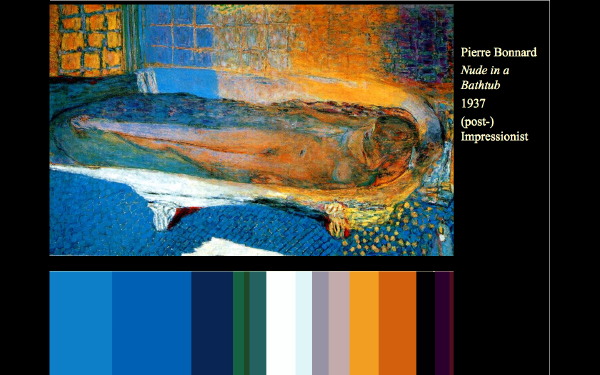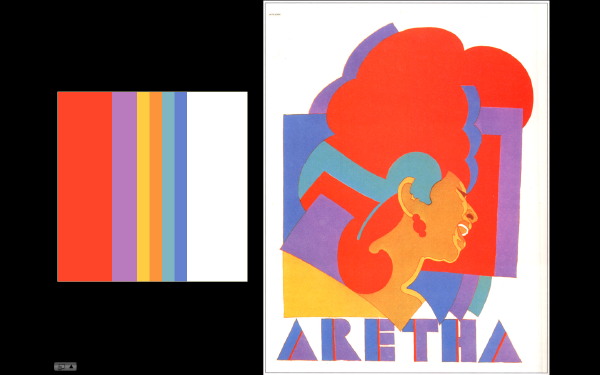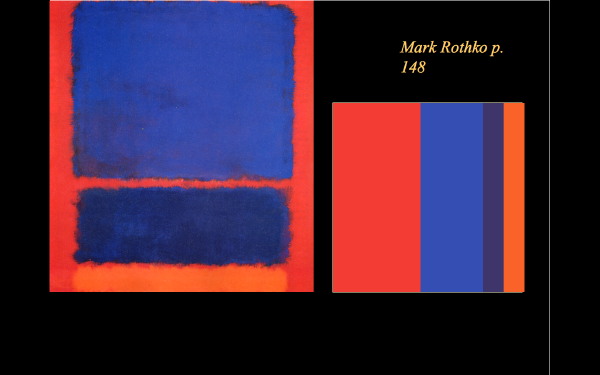Vuillard's painting is dominated by Yellow-hued colors. Most are mid-chroma and low-chroma ochres and browns. The small accents of BV (blue-violet) and orange enliven a potentially sedate scheme.
Bonnard's painting is a rich play of many, many varied mixtures of his basic palette. There are far too many particular colors in this painting to chart. Our aim, then, is to simply and generalize the palette.
There may be many variations on the rich Blue-Violet color -- but we'll simplify the many Blue-Violet colors into three generalizations that are close to, but not exact matches of the many Blue-Violets that Bonnard presents.
Milton Glaser's Aretha poster uses incredibly bold (high chroma) color — yet he manages to create a cohesive composition with interlocking shapes.
Note also how several of Glaser's intense colors have the same value — his red, blue and purple are each roughly the same value. His orange-brown and blue are similar. This repeated use of the same values help unify a potentially explosive color design.
Bruno Paul uses very few colors — all mid-chroma and fairly similar in value. The Y-YO colors provide a dominating foundation, but BBG and RV offers some near-complementary punch.
Mark Rothko's paintings are never well represented in photos — only vaguely suggested. His thin veils of layered transparent color simply do not project in reproductions – we see a simplification, a sort of washing out of subtleties.
When his many subtle variations are simplified, there are very few distinct colors in use.
see also: Color Charting Intro | Color Charting Examples | Color Charting Exercises




